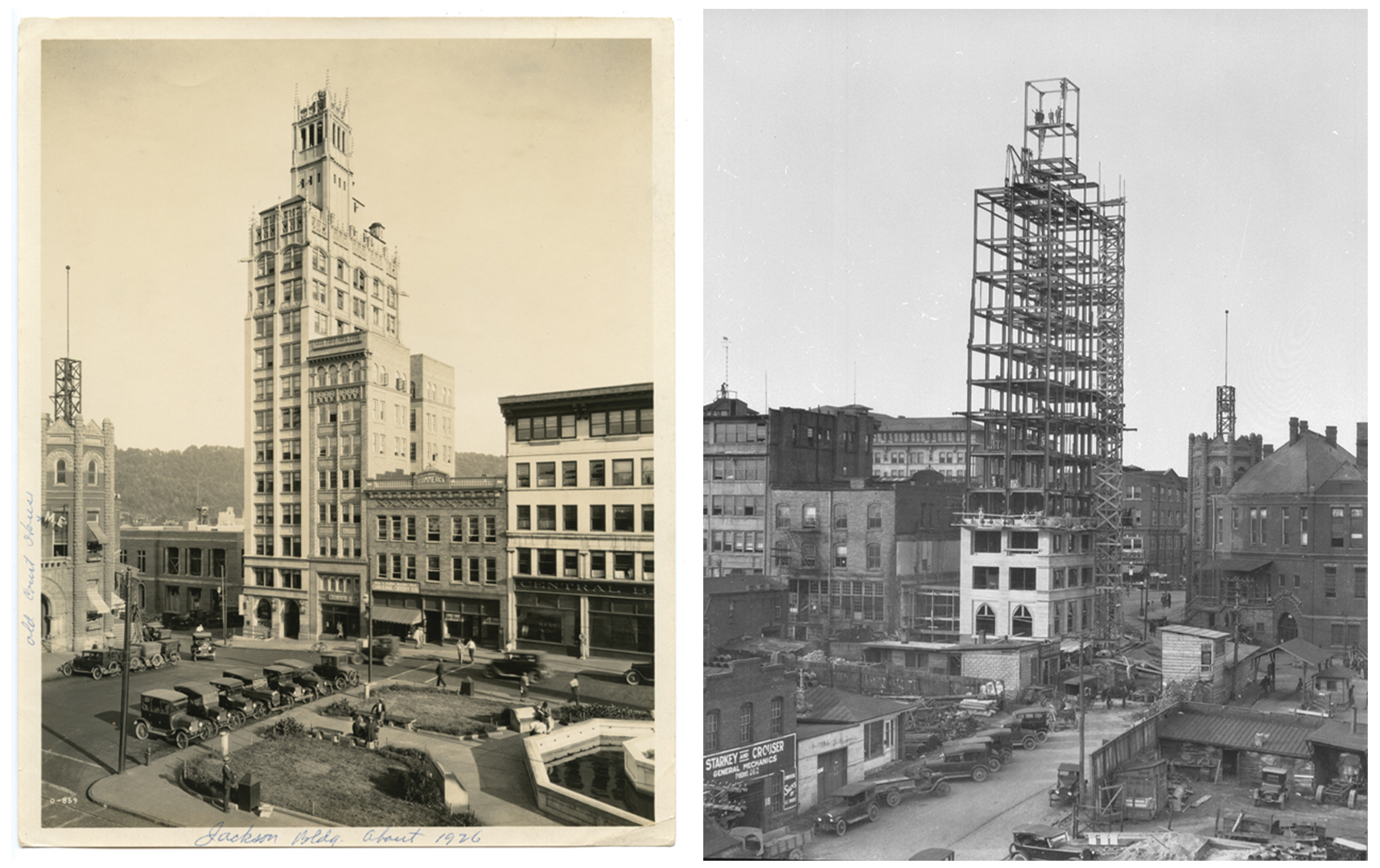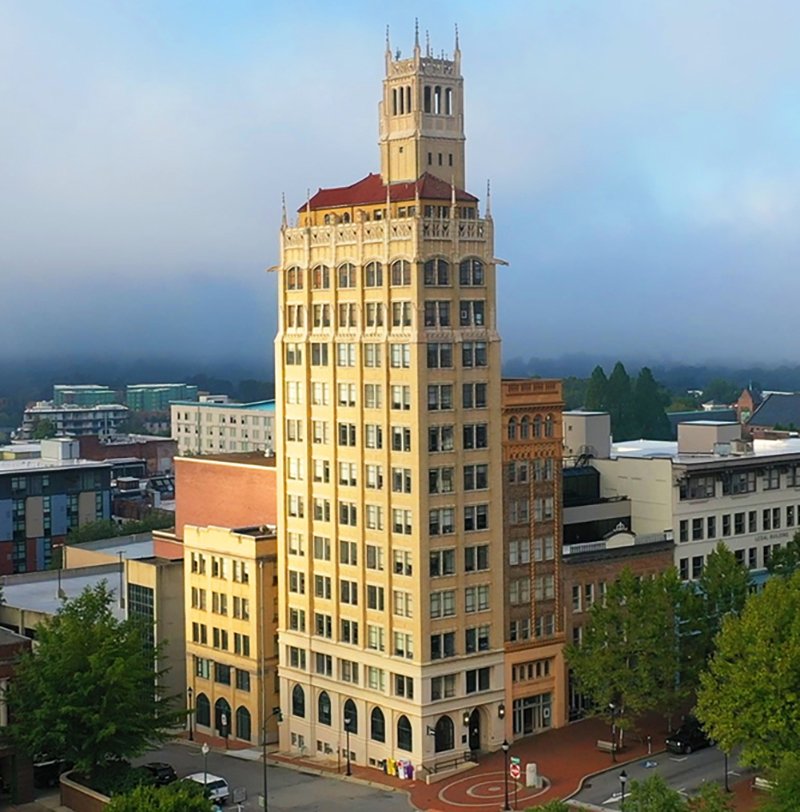A Towering Legacy
A Towering Legacy: Asheville’s Jackson Building, the first skyscraper in Western North Carolina, turns 100
Long a beloved old landmark in Asheville, the L.B. Jackson building was Western North Carolina’s tallest edifice when construction was completed in 1924. Situated along Pack Square Park, the tall, lean structure was commissioned by its namesake, a young real estate developer who went on to build more than 400 homes in the area. Jackson is also credited for his construction of the city’s Flatiron Building, and worked alongside E. W. Grove on the elegant Grove Arcade, establishing a building legacy that has spanned five generations so far.
One of a Kind Annie McDonald, a practicing architectural historian and preservation planner based in Asheville since 2012, notes that the Jackson Building, “is an outstanding example of a Gothic Revival-style commercial building.” Although other historic buildings in the city show some elements of the style, none are Gothic Revival through-and-through quite like the Jackson Building. McDonald considers it to be one of the best examples of the architectural style in the region.
Tiny Footprint, Big Impression Designed by Ronald Greene, a leading builder in Asheville’s architectural heyday of the 1910s and 1920s, the Jackson Building stands tall and proud on a tiny parcel of land, its small footprint and slender aesthetics further emphasizing its 15-story height. The steel-framed brick building features elaborate glazed terra-cotta ornament in Gothic Revival style.

New Heights - A 1920s photo shows the historic Jackson Building in downtown Asheville. It was WNC’s first skyscraper, and 2024 marks its 100th year on our cityscape.
A Guiding Light Originally, the building had more spires and a searchlight that cast a beam for 30 miles. Given its height, one of the building’s earliest uses was a clean-air lookout spot. Because many of Asheville’s buildings were coal-heated, the Jackson Building often hosted the city inspector, who would stand at the top in the mornings and watch for excessive furnace smoke, which would then lead to a fine.
Decades of Use Before the building’s construction, Thomas Wolfe’s father operated his monument shop on the lot. Once completed, Jackson declared that it would be used as attorney’s offices, with the exception of a couple floors for Greene as a thank-you. Currently, it’s still used as office space, but the Jackson family no longer owns the building that bears their name. A Georgia firm bought up a large portion of downtown Asheville in 2017, including the historic Jackson Building.
Mistaken Identity At the top of the skyscraper, you might be able to spot some ornately-carved stone creatures—but they’re not gargoyles like many think. They’re actually grotesques, which look similar to gargoyles, but are purely decorative. Gargoyles are old-world waterspouts; they funnel water away from the sides of the building, while grotesques do not. Grotesques are, however, thought to deter unwelcome supernatural forces and protect their building’s occupants.
